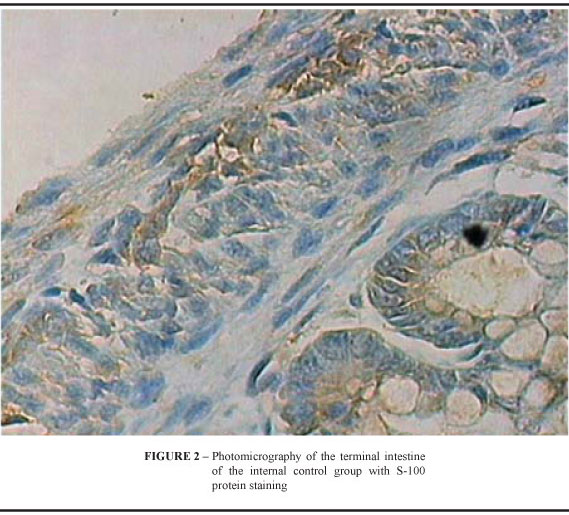PURPOSE: To study the ganglion cells (GC) in the terminal bowel of rats with ethylenethiourea (ETU) induced anorectal malformations (ARM). METHODS: The animals were divided into three groups: Group A - normal fetuses from pregnant rats that were not administered ETU; Group B - fetuses without ARM born from pregnant rats that were administered ETU and Group C - fetuses with ARM born from pregnant rats that received ETU. ETU was administered on the 11th day of pregnancy at the dose of 125 mg/kg body weight by gastric gavage. The rats had cesarean section on the 21st day of gestation. The fetuses’ terminal bowel tissue was analyzed by immunohistochemistry to demonstrate ganglion cells. RESULTS: Statistically significant differences were found between groups A, B and C regarding ganglion cell densities. Group A had the highest cell density, followed by Group B and the lowest density was found in Group C. CONCLUSION: Ganglion cell densities are decreased in the terminal bowel of rats with ARM.
Anus, Imperforate; Constipation; Ethylenethiourea; S100 protein; Enteric Nervous System; Rats






